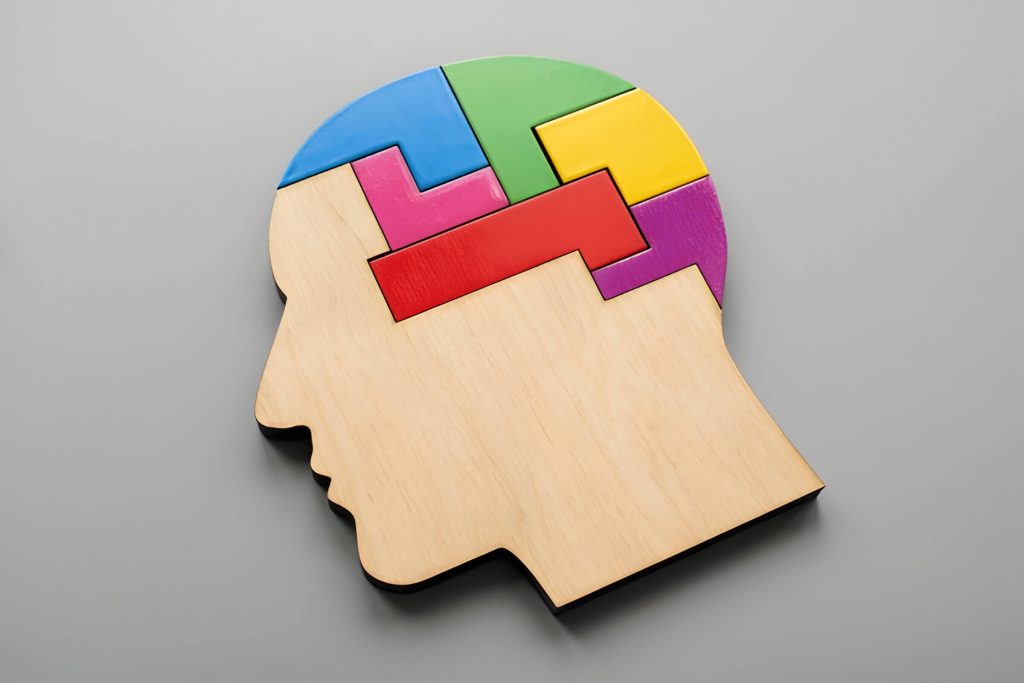
ADHD paralysis, a significant aspect of ADHD, can hinder task completion. Often linked to executive dysfunction and triggered by stress or overwhelm, it involves brain chemistry and dopamine regulation. This article examines its neurological basis, common triggers, and practical management tips through medication, therapy, lifestyle changes, and support systems. By exploring these areas, readers will gain insights into overcoming ADHD paralysis and improving their quality of life.
What is ADHD Paralysis?
ADHD paralysis, also known as ADHD brain freeze, is a phenomenon where individuals with Attention Deficit Hyperactivity Disorder (ADHD) find themselves unable to initiate tasks or make decisions. This overwhelming feeling of being stuck can be attributed to executive dysfunction, a common symptom of ADHD.
Executive dysfunction affects the brain’s ability to manage and regulate cognitive processes such as planning, problem-solving, and time management. When faced with multiple tasks or decisions, the ADHD brain can become overwhelmed, leading to a state of paralysis where it becomes difficult to take any action at all.
Recognizing ADHD symptoms early can help in managing these episodes more effectively. Strategies such as breaking tasks into smaller steps, using reminders and timers, and seeking support from mental health professionals can be beneficial in overcoming ADHD paralysis. Understanding this condition is crucial for those affected by it and their loved ones so that appropriate coping mechanisms can be developed and implemented.
The Science Behind ADHD Paralysis

Attention Deficit Hyperactivity Disorder (ADHD) is often associated with symptoms like inattention, hyperactivity, and impulsivity. However, one lesser-known but equally impactful aspect of ADHD is what many refer to as “ADHD paralysis.” This phenomenon involves an overwhelming sense of being unable to start or complete tasks, even when they are crucial or time-sensitive. To understand ADHD paralysis, it’s essential to delve into the science behind it, particularly the neurological and chemical factors at play.
The brain function of individuals with ADHD differs significantly from those without the condition. One key area of difference lies in the brain’s executive functions, which are responsible for planning, decision-making, and impulse control. These functions are largely managed by the prefrontal cortex, a region that tends to be less active in people with ADHD.
A critical component in understanding ADHD paralysis is brain chemistry, particularly concerning dopamine levels. Dopamine is a neurotransmitter that plays a pivotal role in motivation and reward systems within the brain. Individuals with ADHD often have lower levels of dopamine or inefficient dopamine pathways. This deficiency can make it incredibly challenging for them to initiate tasks that don’t provide immediate rewards or stimulation.
The neurological basis of ADHD paralysis can also be traced back to how different parts of the brain communicate with each other. In people with ADHD, there tends to be a disconnect between regions responsible for motivation and those involved in action execution. This disconnect can lead to a state where one feels mentally paralyzed, fully aware of what needs to be done but unable to take action.
Understanding these underlying factors offers valuable insights into why traditional productivity hacks often fall short for individuals with ADHD. Addressing these challenges requires approaches tailored specifically towards enhancing dopamine production and improving executive function through both medical treatments and behavioral strategies.
In summary, the science behind ADHD paralysis reveals a complex interplay between brain function, chemistry, and neural communication pathways, all contributing factors that make task initiation and completion particularly difficult for those affected by this condition.
Common Triggers of ADHD Paralysis
Understanding the common triggers of ADHD paralysis is crucial for managing and mitigating its effects. ADHD paralysis, often characterized by an overwhelming inability to initiate tasks, can be triggered by several factors. One major trigger is stress, which exacerbates executive dysfunction and makes it difficult for individuals with ADHD to prioritize and organize their thoughts effectively. When stress levels rise, the brain’s ability to process information efficiently diminishes, leading to a state of mental gridlock.
Overwhelm is another significant trigger. The sheer volume of tasks or the perceived complexity of a single task can lead to feelings of being overwhelmed, causing the brain to shut down as a defense mechanism. This overwhelm can stem from various sources such as work deadlines, household responsibilities, or social obligations.
Procrastination also plays a pivotal role in ADHD paralysis. While procrastination is commonly seen as a delay tactic due to laziness or lack of discipline, for individuals with ADHD, it often results from an underlying struggle with executive dysfunction. The inability to break tasks into manageable steps or foresee the consequences of delaying actions can lead to chronic procrastination.
By identifying these common ADHD triggers, individuals can develop strategies to manage their symptoms more effectively. Techniques such as breaking tasks into smaller steps, creating structured routines, and employing mindfulness practices can help mitigate the impact of these triggers on daily life.
Effective Strategies to Manage ADHD Paralysis
Managing ADHD paralysis can be challenging, but with the right strategies, it is possible to improve productivity and reduce procrastination. One of the most effective coping mechanisms for ADHD adults is to break tasks into smaller, more manageable steps. This approach helps in reducing the overwhelming feeling that often leads to paralysis. Setting specific goals and using visual aids like checklists or planners can also provide structure and clarity.
Another key strategy is implementing time management techniques such as the Pomodoro Technique, which involves working in short bursts followed by brief breaks. This method helps maintain focus and prevent burnout. Additionally, creating a conducive work environment free from distractions can significantly enhance concentration.
It’s equally important to incorporate regular physical activity into your routine as exercise has been shown to improve attention and reduce symptoms of ADHD. Mindfulness practices such as meditation and deep breathing exercises can also be beneficial in managing stress and improving overall mental well-being.
Support systems play a crucial role in overcoming procrastination in ADHD sufferers. Engaging with support groups or seeking professional help from therapists who specialize in ADHD can provide valuable insights and encouragement.
By adopting these productivity tips for ADHD sufferers, individuals can better manage their symptoms and lead more organized, fulfilling lives.
The Role of Medication and Therapy in Treating ADHD Paralysis
ADHD paralysis, characterized by an overwhelming sense of being unable to initiate tasks or make decisions, can significantly impact daily functioning. Both medication and therapy play crucial roles in managing these symptoms effectively.
ADHD medication benefits include improved focus, reduced impulsivity, and enhanced ability to complete tasks. Stimulants like methylphenidate and amphetamines are commonly prescribed and have been shown to increase the levels of certain neurotransmitters in the brain, thereby improving attention and reducing hyperactive behaviors. Non-stimulant medications such as atomoxetine also offer benefits by targeting different pathways in the brain.
Cognitive Behavioral Therapy (CBT) for ADHD patients is another critical component of treatment. CBT helps individuals develop coping strategies to manage their symptoms better. Through therapeutic approaches like time management training, organizational skills development, and problem-solving techniques, patients learn how to break down overwhelming tasks into manageable steps.
Combining medication with cognitive behavioral therapy offers a comprehensive approach to managing ADHD paralysis. While medication addresses the neurological aspects of ADHD, therapy focuses on behavioral changes that can lead to long-term improvements in daily functioning. This dual approach ensures that both immediate symptoms are managed while also equipping individuals with skills for sustained progress.
Lifestyle Changes That Can Help Reduce ADHD Paralysis Symptoms
Managing ADHD paralysis can be challenging, but incorporating certain lifestyle changes can significantly alleviate symptoms. Adopting healthy habits for managing ADHD symptoms is a proactive approach that can lead to improved focus and productivity.
Diet and Exercise Impact on ADHD
Nutrition plays a crucial role in brain function and overall well-being. A balanced diet rich in fruits, vegetables, lean proteins, and whole grains can help stabilize energy levels and improve concentration. Omega-3 fatty acids, found in fish like salmon and supplements like flaxseed oil, have been shown to support cognitive function.
Regular physical activity is equally important. Exercise increases dopamine levels in the brain, which can enhance attention and reduce hyperactivity. Aim for at least 30 minutes of moderate exercise most days of the week to experience these benefits.
Mindfulness Techniques for Focus Improvement
Mindfulness techniques are another effective tool for managing ADHD paralysis symptoms. Practices such as meditation, deep breathing exercises, and yoga can help calm the mind and enhance focus. Mindfulness encourages individuals to stay present in the moment, reducing the tendency to become overwhelmed by tasks.
Incorporating short breaks throughout the day to practice mindfulness can also prevent burnout and maintain mental clarity. Start with just 5-10 minutes daily and gradually increase the duration as you become more comfortable with these practices.
By integrating these lifestyle changes, you can create a supportive environment that helps manage ADHD paralysis symptoms more effectively.
The Importance of a Support System in Managing ADHD Paralysis
Managing ADHD paralysis can be a daunting task, but having a robust support system significantly eases the burden. Support groups for people with ADHD play a crucial role in providing a sense of community and shared understanding. These groups offer an environment where individuals can share experiences, strategies, and encouragement, which is vital for coping with the challenges posed by ADHD paralysis.
The importance of a support network cannot be overstated. Family support strategies are essential as they create a stable foundation at home. Families can help by establishing routines, offering reminders, and being patient with their loved ones’ struggles. Open communication within the family ensures that everyone is on the same page and working towards common goals.
Community resources for ADHD provide additional layers of assistance. Local organizations often offer workshops, counseling services, and educational materials tailored to those managing ADHD. Utilizing these resources can lead to better management techniques and increased awareness about the condition.
Friends also play an indispensable role in supporting someone with ADHD. Friends support tips include being understanding of their friend’s limitations, offering to help with tasks that seem overwhelming, and providing positive reinforcement whenever possible. A well-rounded support system composed of family, friends, community resources, and specialized groups creates an environment where individuals with ADHD can thrive despite their challenges.
Conclusion- Taking Control Over ADHD Paralysis Starts Today!
Taking control over ADHD paralysis begins with understanding and recognizing the symptoms. By acknowledging the challenges that come with ADHD, individuals can start to implement effective strategies to manage their condition. These strategies may include breaking tasks into smaller, manageable steps, setting clear and achievable goals, and utilizing tools such as planners or apps to stay organized.
It is also crucial to seek support from professionals who can provide guidance tailored to individual needs. Cognitive-behavioral therapy (CBT) and medication are common treatments that have shown significant benefits for many people with ADHD. Additionally, joining support groups or engaging in community forums can offer valuable insights and encouragement from others who share similar experiences.
Remember, taking control over ADHD paralysis is a journey that requires patience and persistence. By making small changes today, you can build momentum towards a more structured and fulfilling life. Start by identifying one area where you feel stuck and apply a new strategy, progress will follow as you continue to adapt and refine your approach.

